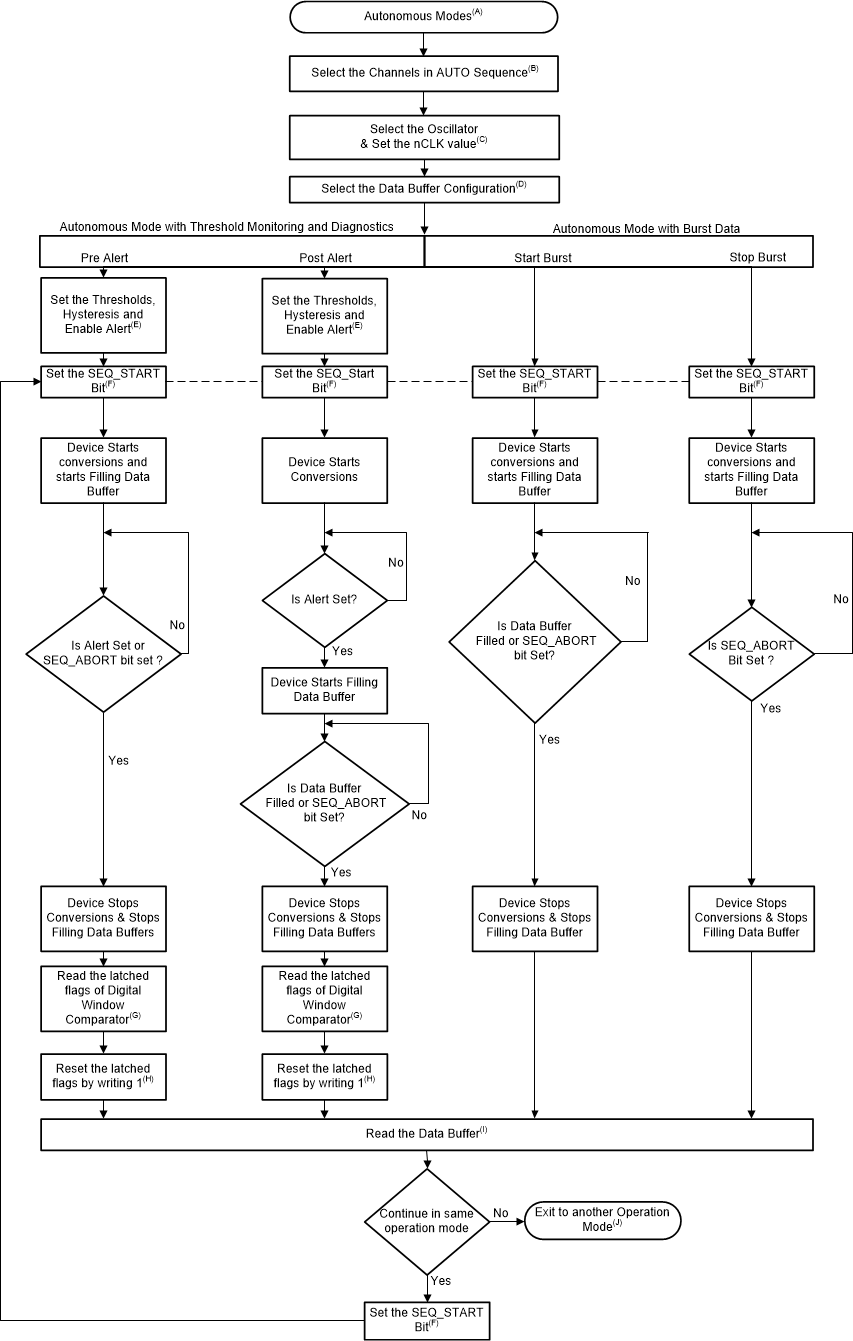ZHCSJ06B November 2017 – September 2022 ADS7142-Q1
PRODUCTION DATA
- 1 特性
- 2 应用
- 3 说明
- 4 Revision History
- 5 Pin Configuration and Functions
-
6 Specifications
- 6.1 Absolute Maximum Ratings
- 6.2 ESD Ratings
- 6.3 Recommended Operating Conditions
- 6.4 Thermal Information
- 6.5 Electrical Characteristics: All Modes
- 6.6 Electrical Characteristics: Manual Mode
- 6.7 Electrical Characteristics: Autonomous Modes
- 6.8 Electrical Characteristics: High Precision Mode
- 6.9 Timing Requirements
- 6.10 Switching Characteristics
- 6.11 Timing Diagrams
- 6.12 Typical Characteristics: All Modes
- 6.13 Typical Characteristics: Manual Mode
- 6.14 Typical Characteristics: Autonomous Modes
- 6.15 Typical Characteristics: High-Precision Mode
-
7 Detailed Description
- 7.1 Overview
- 7.2 Functional Block Diagram
- 7.3 Feature Description
- 7.4 Device Functional Modes
- 7.5 Programming
- 7.6 Register Map
- 8 Application and Implementation
- 9 Device and Documentation Support
- 10Mechanical, Packaging, and Orderable Information
7.4.3 Autonomous Modes
In autonomous mode, the ADC can be programmed to monitor the voltage applied on the analog input pins. The ADC generates a signal on the ALERT pin when the programmable high or low threshold values are crossed. The host processor can read the ADC conversion results from the internal data buffer.
In autonomous mode, the first start of conversion must be provided by the host and the ADC generates the subsequent start of conversions. The ADC initiates the following start of conversions using the internal oscillator.
After configuring the operation mode to autonomous mode (set the OPMODE_SEL register to 110b), as illustrated in Figure 7-11, steps for operating the ADC to be in different autonomous modes are illustrated in Figure 7-14.

Abort the present sequence by setting the SEQ_ABORT bit in the ABORT_SEQUENCE register before changing the ADC operation mode or ADC configuration.